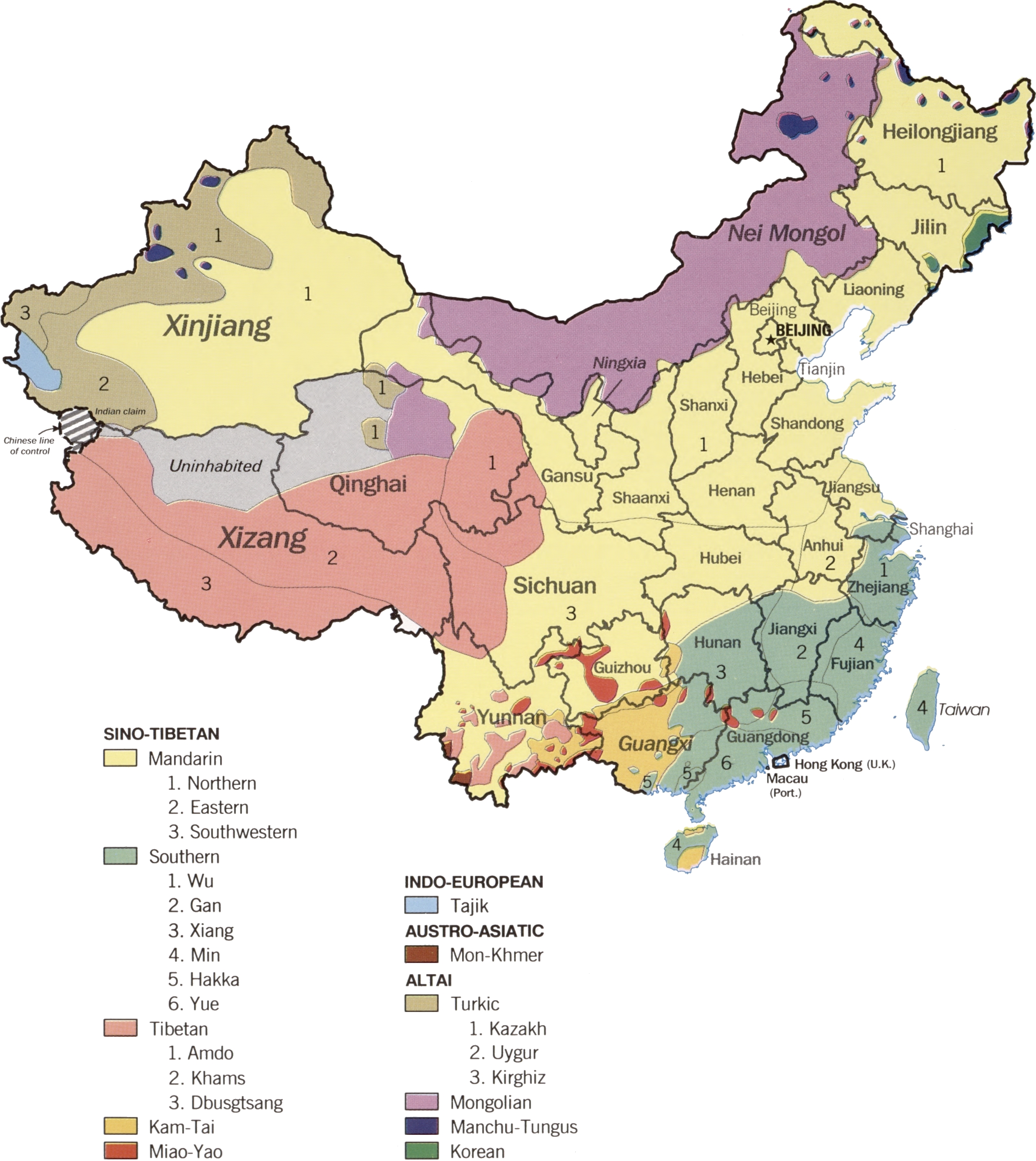China
China's languages
Most people know that Mandarin Chinese — the official dialect used and promoted by the Chinese government and taught in most Western Chinese courses — is just one of many, and that a variety of other dialects (Cantonese, Shanghainese, Taiwanese, etc.) have millions of speakers as well. The above map illustrates the geographic distribution of the various dialects on mainland China and Taiwan. But perhaps less well known is exactly how different the dialects can be. They use the same character set, and most use Mandarin in writing, but the spoken dialects are often mutually unintelligible. As University of Wisconsin linguist Zhang Hongming once told the New York Times, "The degree of difference among dialects is much higher than the degree of difference among European languages."
India's languagesAs we have seen ethnic separatist movement recently -- Scotland, Wales, Catalonia, Kurds, ISIL, Libya, Sri Lanka, and Ukraine come to mind -- one wonders if we will see further separation in the two most populous countries of the world.
Just as many of China's most populous cities (Shanghai, Guangzhou, Shenzhen, Hong Kong) are located in regions where dialects other than Mandarin prevail, many of India's biggest cities (Mumbai, Bangalore, Kolkata) are in states where Hindi does not dominate. This map is a bit outdated — Andhra Pradesh was split up this year, with the city of Hyderabad going to the new state of Telangana — but it's a good indication of the levels of linguistic diversity in the country, which speaks about 780 languages total, and has lost 220 in the past fifty years.


No comments:
Post a Comment